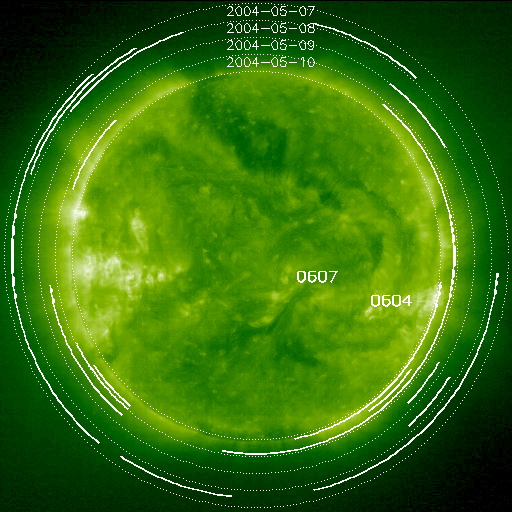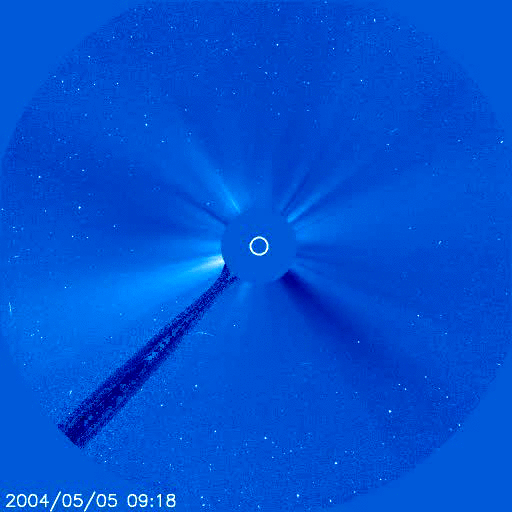CACTus is not a plant, it's a software tool "Computer Aided CME Tracking" developed by the SIDC to autonomously detect coronal mass ejections (CMEs) in a series of pictures taken by LASCO, the coronograph onboard of SOHO. On May 10, CACTus detected a partial halo CME. There is only a small chance that the glancing blow in two of three days affects the earth magnetic field.
Presto put on the web on May 11:
"...A partial halo CME is detected by CACTus (Computer Aided CME Tracking software, developed by the SIDC) on May 10, 04:50 UT. The CME has an angular width of 148 degrees. This means that the CME covers less than half the Sun. For comparison: a nice full halo CME has an angular width of 360 degrees, surrounding the whole Sun. You can always take a look at the downloadable Solar Weather Browser (link SWB) to see a clarifying picture The CME is probably associated with a B1.9 flare peaking at 03:55UT coming from NOAA active region 0604. ..."

In the first ring the closest to the Sun with the mark of May 10, a white band ranges from beneath to almost the whole right side. This line is a pictorial representation of the CME. The May 7th halo CME is still visible on the image. A shock was seen in the ACE-data and SOHO/CELIAS measurements on May 10 as a jump in the graphs of different physical quantities versus time. A shock could be a signature of a possible arrival of a CME on Earth. With the May 7th CME in our minds, we expect the May 10th CME not to be geoeffective.

Above a LASCO movie of the CME. It appears in the C3 field on 06:42 UT in the south-west corner.
What is the Solar Weather Browser?
The Solar Weather Browser (SWB) is a newly developed tool that provides an easy overview access to a wide variety of Space Weather data, summarizing the current and past conditions on the Sun and the heliosphere. It offers the possibility of combining a series of images and data in overlays. In the picture on the left, we used an EIT 195 image, on top of that the CACTus CME output and as last information layer the NOAA H-alpha plage information. The tool is of great use during space weather forecasting as a graphical representation. Besides this, the SWB acts as an extended archive.
This text is also available in Nederlands and Français.





